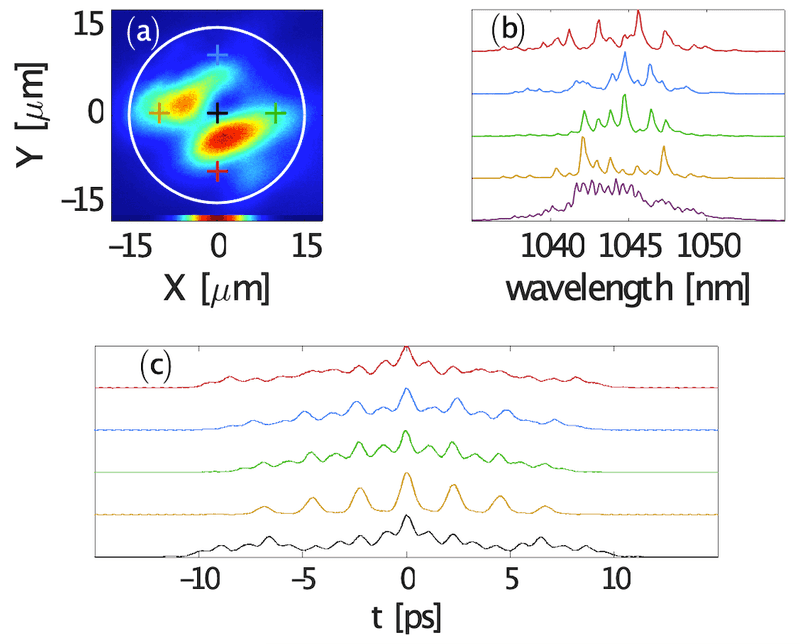multimode lasers
As single-mode fiber lasers and telecom systems reach limits, there are efforts to use the spatial degrees of freedom present in multimode fiber, either to enhance power-handling, complexity, or information capacity. I’ve studied a few femtosecond multimode lasers, which host nonlinear dynamics and soliton-like objects that are bewilderingly complex and rich. Simulating these physics is becoming too difficult for even modern computers, and thermodynamic models are being used to describe the high-dimensional nonlinear physics.
Multimode Mamyshev Oscillator
In one project, I made and studied a spatiotemporally-mode-locked Mamyshev Oscillator. The laser makes periodic pulses that can have strong or weak spatiotemporal and spatiospectral complexity- i.e., different points in space can support different temporal profiles and spectra, depending on an array of linear and nonlinear factors.
Beam Cleaning Amplifier
In another project, I studied an effect known as Kerr beam cleaning, which is a nonlinear process that turns a speckled, highly-multimode beam into a bell-shaped, near-gaussian one. This is one potential way to generate a clean, high(er) quality beam from a multimode fiber. This phenomenon relies on the properties of graded-index fiber (which is a waveguide version of the harmonic oscillator potential), and is predicted by optical thermodynamics models. I observed this phenomenon occurring in a femtosecond fiber amplifier (read about it here), and measured it quantitatively using holography.





